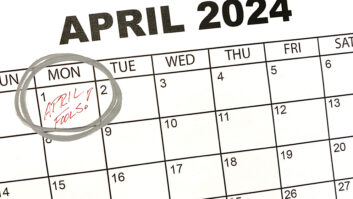The term “net neutrality” has been bandied about for years, but it still doesn’t get the attention it deserves and is often misuncerstood. Simply put, it means that pipeline owners, aka telecoms, can’t charge us differently based on content, website, platform or attached equipment. For the past eight years, Washington has been onboard; in 2015 the FCC reclassified broadband access as a telecommunications service. But in January this quickly changed with the appointment of Ajit Pai as chairman of the Federal Communications Commission. Pai is a former Verizon attorney and has been an FCC commissioner since 2012, appointed by President Obama to the Republican Party position.
Just days after his promotion, Pai moved to roll back consumer protection regulations created during Obama’s presidency. He halted nine companies from providing low-income users with discounted high-speed net services and withdrew a proposal to open up the cable box market. Then on February 23, the FCC voted 2-1 to roll back enhanced net neutrality reporting requirements for smaller ISPs, essentially exempting them from giving consumers information on fees, service pricing and data caps. So, ISPs get free rein to operate as they’d like. For example, in 2015, AT&T was fined $100 million for slowing down the data speeds of customers with unlimited data plans.
So, how does this affect consumers and content creators? First, it’s helpful to know who, and what, are the big dogs of Internet bandwidth. Sandvine.com reported this year that North American streaming audio and video accounts for 71% of evening traffic and expects this figure will reach 80% by 2020. It’s not hard to imagine that Netflix, YouTube, Amazon—the top three content providers—will become more expensive. How about sports? Could you as a consumer be charged more to watch the Super Bowl because it’s in demand? Sure! And what about online gaming and the VR industry, both time-sensitive, on-demand hungry applications that would cost more in a fast-lane vs. slow-lane world.?
Some consumers relish this and love the idea of a prioritized Internet, arguing that not all Internet traffic is created equal. In regards to the FCC’s ban on paid prioritization, Tom Struble, a writer for techpolicy corner.org said, “As a consumer who regularly both plays competitive video games (mainly FIFA, but also some first-person shooters) and streams live video (mainly sports) on the Internet, this angers me.”
Struble also points out that “any claim that ‘equality’ is embedded into the Internet’s foundation is just patently false,” adding that many gamers, and game providers would be happier with a diamond lane for hire where they could play, and provide their games, with assured speed.
Likewise, software updates, email, instant messages and other like content is not time-sensitive and doesn’t merit prioritizing or sharing of the fast-lane. But sustained bitstreams like 911 calls, video chat or video streaming does, and already has a tech advantage. In fact, in early net development, DiffServ protocols were designed to provide differential treatment of bit traffic in real time, making the internet “smart.”
Even if you go for this, how about fast pipeline access in general? Last year, the National Digital Inclusion Alliance accused AT&T of ignoring low-income Cleveland neighborhoods making broadband upgrades in the area. So, income discrimination could be an indicator of the future of a closed internet. You can almost hear echoes of Utah Representative Jason Chaffetz’s iPhone vs. healthcare argument here.
How about our business? Like all of you, I hear great-sounding audio at work, and I would like to hear great-sounding audio as a consumer. At the recent NAMM show, the P&E Wing of the Recording Academy updated manufacturers and the press about its ongoing efforts, in conjunction with Consumer Technology Association and Digital Entertainment Group, in promoting production and delivery of hi-res audio. The presenter, DEG Senior Director Marc Finer, talked about the progress to promote and standardize Hi-Res Audio across all formats. At lunch prior, Phil Wagner, President of Focusrite/Novation, nailed it, saying we are “creating a new legacy” in urging engineers to choose higher sample rates (96k/24-bit) when they create new sessions in their DAWs.
The million-dollar question (literally) then becomes: when consumers choose to pay for Hi-Res content, will they also pay above and beyond the base fee when their ISP hits them with a surprise on their bill? We’ve all crossed our data caps at one time or another; it is a terrifying thing to see those numbers. The first thing you want to do is find out why and shut it down. Hi-Res then becomes a rich man’s toy, which limits broad appeal. How about downloads, which aren’t as time-sensitive, you say? At HD Tracks, DSD albums can go for $29.99, and you need a player, and the same site has the score to La La Land at 44.1/24 for $31.98, certainly high-priced and not Hi-Res (let’s confuse people shall we?).
Joni Mitchell said it best in “Big Yellow Taxi”: “Don’t it always seem to go that you don’t know what you’ve got till it’s gone.” The loss of net neutrality would eventually affect all consumers, putting them head-to-head against the Telecoms. The good news, if there is any, is that the FCC is like a cruise ship that is hard to turn around. If you’ve been following the wireless bandwidth debate and the incentive auction I described last month, you know what I mean. It may take a while, but affordable, streamable Hi-Res and specialized content isn’t the vision of Pai and the FCC; they cater to pipeline owners, not pipeline users.







